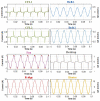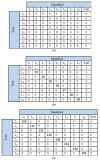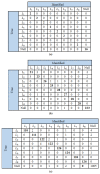Rule-Based Non-Intrusive Load Monitoring Using Steady-State Current Waveform Features
- PMID: 37571711
- PMCID: PMC10422426
- DOI: 10.3390/s23156926
Rule-Based Non-Intrusive Load Monitoring Using Steady-State Current Waveform Features
Abstract
Monitoring electricity energy usage can help to reduce power consumption considerably. Among load monitoring techniques, non-intrusive load monitoring (NILM) provides a cost-efficient solution to identify individual load consumption details from the aggregate voltage and current measurements. Existing load monitoring techniques often require large datasets or use complex algorithms to obtain acceptable performance. In this paper, a NILM technique using six non-redundant current waveform features with rule-based set theory (CRuST) is proposed. The architecture consists of an event detection stage followed by preprocessing and framing of the current signal, feature extraction, and finally, the load identification stage. During the event detection stage, a change in connected loads is ascertained using current waveform features. Once an event is detected, the aggregate current is processed and framed to obtain the event-causing load current. From the obtained load current, the six features are extracted. Furthermore, the load identification stage determines the event-causing load, utilizing the features extracted and the appliance model. The results of the CRuST NILM are evaluated using performance metrics for different scenarios, and it is observed to provide more than 96% accuracy for all test cases. The CRuST NILM is also observed to have superior performance compared to the feed-forward back-propagation network model and a few other existing NILM techniques.
Keywords: current waveform; event detection; feature extraction; load identification; non-intrusive load monitoring; set theory.
Conflict of interest statement
The authors declare no conflict of interest.
Figures














References
-
- Dennis K. Environmentally beneficial electrification: Electricity as the end-use option. Electr. J. 2015;28:100–112.
-
- Grueneich D.M. The next level of energy efficiency: The five challenges ahead. Electr. J. 2015;28:44–56. doi: 10.1016/j.tej.2015.07.001. - DOI
-
- Chen S., Zhang G., Xia X., Chen Y., Setunge S., Shi L. The impacts of occupant behavior on building energy consumption. Sustain. Energy Technol. Assess. 2021;45:101212.
-
- Tuomela S., De Castro Tomé M., Iivari N., Svento R. Impacts of home energy management systems on electricity consumption. Appl. Energy. 2021;299:117310. doi: 10.1016/j.apenergy.2021.117310. - DOI
-
- Mutule A., Domingues M., Ulloa-Vásquez F., Carrizo D., García-Santander L., Dumitrescu A.-M., Issicaba D., Melo L. Implementing smart city technologies to inspire change in consumer energy behaviour. Energies. 2021;14:4310. doi: 10.3390/en14144310. - DOI
LinkOut - more resources
Full Text Sources

